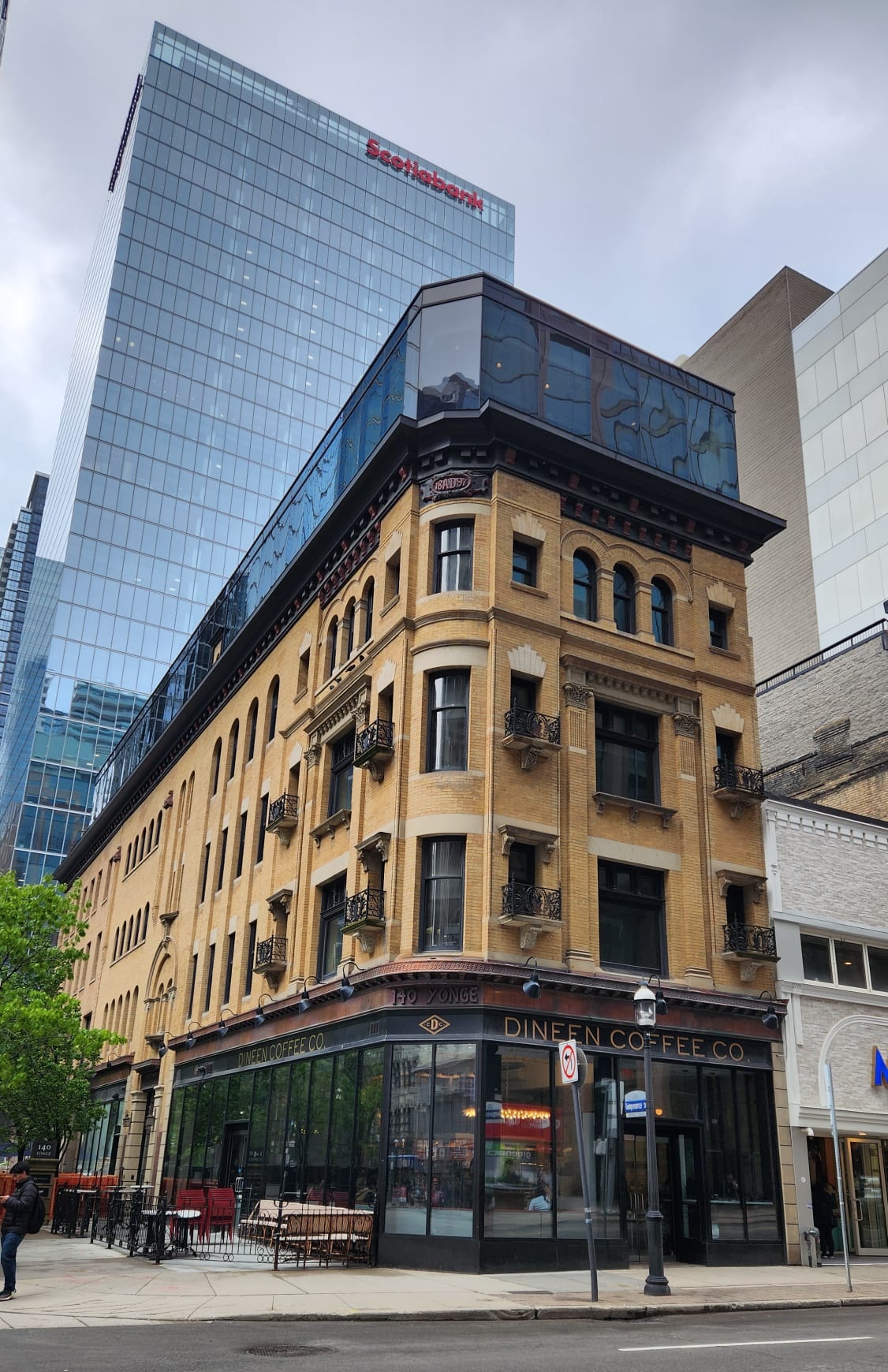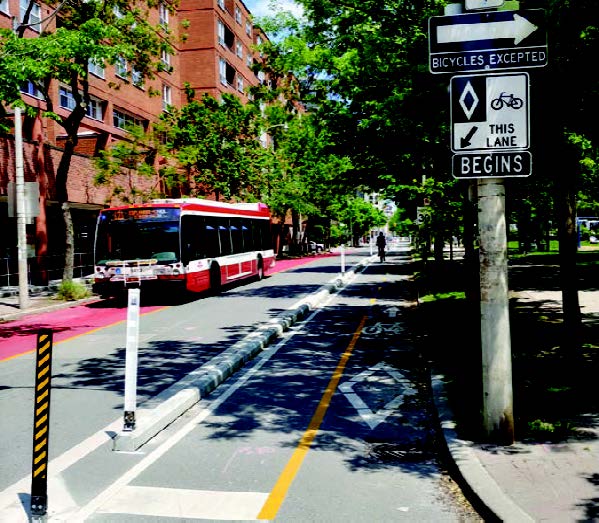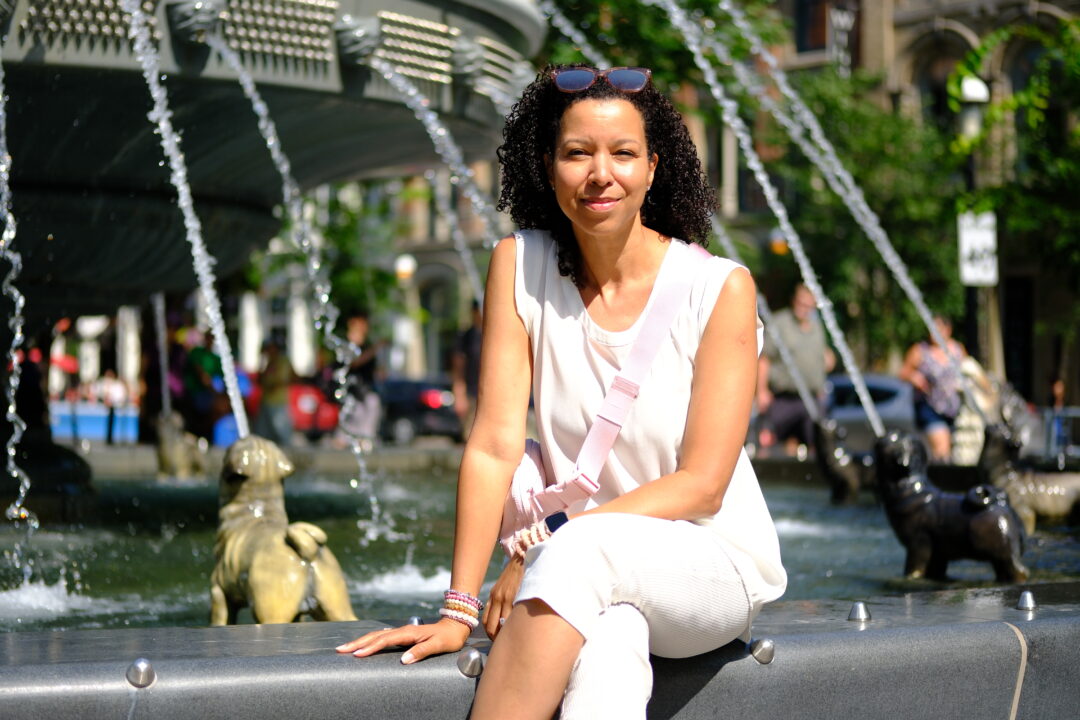By Bruce Bell –
Upon arriving from Connecticut in 1802, Jordan Post purchased a tract on the south side of King Street from present-day Yonge to Bay Streets for the modern equivalent of $1,000. Eventually he set up shop as the town of York’s first watchmaker.
One of the first tradesmen to see potential at the King and Yonge intersection, Post is honoured today with Jordan Street one block west of Yonge and King. His wife, the former Melinda Woodruff, is remembered in Melinda Street one street south of King.
Thanks to Post, King and Yonge became the centre of the dry goods industry, dotted with little family-run shops that eventually grew into massive department stores.
In 1835, George Michie took over Jordan’s Watch Shop and opened his own dry goods store. Competing with established stores, he offered a more varied list of products, including silk stockings, original art, exotic bamboo furniture, rare oranges, French wines, and imported liquor and spirits from his native Scotland.
As Toronto grew, businesses started to spread along Yonge Street. Soon many stores that had once lined King Street moved to the newer retail centre at Queen and Yonge, later dominated by large department stores.
Robert Simpson opened his first Yonge Street store in 1872 just north of King. By the time of his death in 1897, his store had moved up to Queen and took up the entire southwest corner at Yonge.
By 1920 Simpson’s started to expand and by the end of the decade took over the entire block of Richmond, Bay, Yonge and Queen – now home to the Hudson’s Bay and Saks Fifth Avenue stores.
Timothy Eaton established his Yonge Street store in 1869 also just north of King. By the time of his death in 1907 it had become the largest department store in Toronto, also doing an extensive mail order business across Canada.
By 1920 the Eaton’s department store, its factory and Annex store took up the entire block on the northwest corner of Queen and Yonge directly across from Simpson’s.
While both Eaton’s and Simpson’s are long gone, their buildings remain. A new Eaton Store built in 1977 as part of the Eaton Centre became Sears in 2002 and in 2016 a Nordstrom department store. Now it’s looking for a new tenant.
Most of the lesser-known and smaller stores that at one time lined Yonge Street are gone, their buildings torn down or hidden behind years of grime, soot and false fronts.
However, one of those stores has been lovingly restored, showing how many of them would have looked at the turn of the 20th century.
The Dineen Bros, a gentleman’s clothing store by architect F.H. Herbert, was built in 1897 at a cost of $30,000. Once it was the showroom and factory of W&D Dineen Co., retailers of hats, caps and fine furs.
The company was started by Dennis Dineen about 1872 at 76 Yonge Street at King, then the centre of fashion. His family and his younger brother William had arrived in Toronto from Ireland in the 1840s.
When Dennis died, William took over the company and moved the business into their own building on the northwest corner of Temperance and Yonge.
The company quickly gained a reputation for superior workmanship fashioning high-quality hats, robes, coats and cloaks made from seal, bear and mink pelts from Russia, Persia and Germany. This fine work was done in the factory atop their new building, with a ground-level showroom and retail store.
However, by the 1930s the company had disappeared from local business directories, probably a victim of the Great Depression when average businessmen could no longer afford fine men’s clothes.
With the arrival of suburban shopping malls in the late 1940s and early ’50s, Yonge Street began to lose its appeal as the city’s fashion centre. However, since the opening of the colossal Eaton Centre in 1977, Toronto’s main drag has been on the comeback trail.
In 2012 the Commercial Realty Group bought and restored the Dineen Building, winning the Architectural Conservancy of Ontario’s James D. Strachan Award for Craftsmanship on a restoration project.
It makes you wonder what other hidden treasures could be found underneath the grime and false fronts of Yonge Street’s remaining historic buildings.




